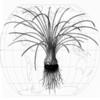| Publication Type: | Journal Article |
| Year of Publication: | 1978 |
| Authors: | M. Kruatrachue, Evert R. F. |
| Journal: | Annals of Botany |
| Volume: | 42 |
| Issue: | 1 |
| Pagination: | 15 - 21 |
| Date Published: | 1978/// |
| Abstract: | Root tissues of Isoetes muricata Dur. were fixed in glutaraldehyde and postfixed in osmium tetroxide for electron microscopy. Very young root sieve elements can be distinguished from contiguous parenchyma cells by the presence of crystalline and/or fibrillar proteinaceous material in dilated cisternae of rough endoplasmic reticulum (ER). Similar crystalline-fibrillar material accumulates in the perinuclear space. During differentiation, the portions of ER enclosing this proteinaceous substance become smooth surfaced and migrate to the cell wall. Along the way many of them form multivesicular bodies which fuse with the plasmalemma, discharging their contents toward the wall. Nuclear degeneration is pycnotic. At maturity, the sieve element contains a degenerate, filiform nucleus, plastids, and mitochondria. In addition, the wall of the mature sieve element is lined by a plasmalemma and a parietal network of smooth ER. Sieve-area pores are present in both end and lateral walls of mature sieve elements. Whereas a single cluster of pores occurs in each end wall, the pores of the lateral walls are solitary and few in number. © 1978 Annals of Botany Company. |
| URL: | http://www.scopus.com/inward/record.url?eid=2-s2.0-49349132852&partnerID=40&md5=67d8953cc7808df8f64f219b72d811b2 |
